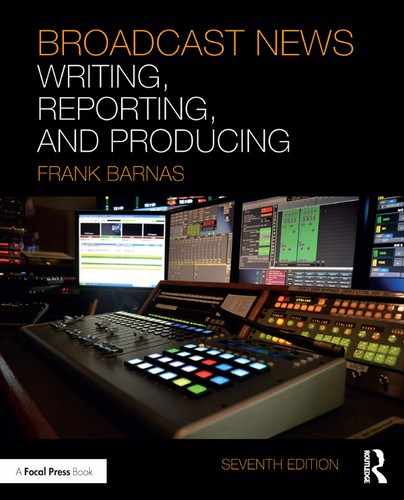CHAPTER 12
Reporting Live
CONTENTS
Memorizing and Delivering Live Reports
KEY WORDS
Ad-Libbing
Communication Chain
Dining Table Solution
Immediacy
Interrupted Feedback
Reporter’s Notebook
Voiceover
INTRODUCTION
The immediacy of broadcast journalism is the greatest advantage it possesses over print media. This chapter discusses how radio and television newsrooms may exploit that advantage by using reporters in the field to deliver live reports. Further, this chapter offers some suggestions for handling the special pressures and responsibilities that live reporting places on broadcast journalists.
Reporting live from a mobile unit has always been routine for a radio reporter; since its inception, immediacy has been radio’s big advantage. Since the early days of radio, Americans have been accustomed to getting the first news of an important story from that medium. Often, the breaking news has come from a radio reporter at the scene.
Radio has lost some of its advantage as new technology has made it possible for television to put a live signal into homes almost as quickly and easily as radio does. However, radio continues to be first in reaching a large portion of the listening audience—those traveling on the highways.
Unfortunately, the ability to dispatch a TV crew to a field location for a live report has led to some newsrooms producing live shots without compelling reasons. If there is a massive traffic accident during the newscast and a live report can be filed to provide up-to-the-minute information, that’s good use of a live shot.
Of course, not all stories conveniently happen during news broadcasts. The most egregious examples are when early morning newscasts feature a live shot at 6am.
Often, these have the field reporter shivering before a dark courthouse, delivering forgettable lines such as “In a matter of just eight hours, jury selection will begin for the upcoming trial.” As a rule of thumb, if the location is dark and empty, all the newsmakers have gone home, and the only people around are mopping up and locking the doors, the producer should provide a compelling reason for putting everyone through the effort and expense of a live shot.
ORGANIZING THOUGHTS
Because they broadcast live so often, radio reporters learn early in their careers how to organize their thoughts quickly. They also develop the skill of ad-libbing, which means they can improvise an impromptu speech without preparation. Radio reporters are often expected to report from the scene of a breaking story for much longer periods than their TV counterparts—this is because radio is normally not under the same time limitations as television. It is much easier to interrupt a music format on radio with a breaking story, for example, than it is to interrupt a soap opera on television. Lost advertising revenue is far less expensive for a radio station than for television, and it is much easier for a radio station to make up those lost commercials.
The best way to organize material for a live report is to use a reporter’s notebook. Its slim design is particularly handy because it fits into a handbag or jacket pocket. Also, reporters should always take more than one pen or pencil. In freezing weather or pouring rain, a pencil works much better than a pen. Of course, many reporters readily take notes on their cell phone then glance at the screen as needed.
In anticipation of going live from the scene, broadcast reporters must keep notes on a variety of happenings. First, they must keep track of important comments that are made, whether during a news conference or a one-on-one inter view. They must note exactly when the remarks were made so they can be located quickly on the video-tape or audiotape. Some reporters take courses in speedwriting. Others develop a shorthand system of their own; thus their notes are illegible to anyone who happens to look at the page.

FIGURE 12.1 HYS_NP/Shutterstock.com
Experienced reporters learn that they cannot get so involved in taking notes that they lose control of the interview. They make entries only when comments are important enough to be used as a sound bite or in the narration that will surround it. Television reporters can check the time code on their video footage and easily note the time when they record something important.
Television Versus Radio Field Reporting
Reporting live presents different problems for radio and TV reporters. For starters, radio reporters work alone and can often simply call in their report on their cell phone. Since the audience does not see the radio reporter, she can easily spread out her notes and concentrate on delivering her narration.
To the contrary, TV reporters have at least one and sometimes two people with them in the microwave truck, plus there are more logistical and technical concerns. Atlanta’s WSB-TV Director Lucas Johnson recalls a story when a chief photographer was setting up a microwave shot in the middle of downtown Atlanta, surrounded by skyscrapers. The only way he could send the shot to the station was to bounce it off a puddle, then a building, then back to the receive site. As the time for the live shot approached in the newscast, the puddle started to evaporate in the Atlanta heat. Johnson says microwaved live shots are still popular, adding:
More and more we are using a product called LiveU that uses a cell signal to send the shot back. When we first started using it, the picture was pretty poor and there was sometimes a 15-second delay. It has since gotten a lot better. The picture looks just as a good as a microwave or satellite shot and the delay is down to one or two seconds. It is basically a backpack cell unit that you plug your camera into. There also is a phone app that reporters can use to go live with their iPhones.
All of our live trucks also have wireless cameras. So, as long as they are within sight of their truck, no more pulling hundreds of feet of cable.
One new thing we’ve started using are cameras with cloud capabilities. So as a videographer and reporter are out shooting their story, the footage is going to the cloud. So promotions and tease writers don’t have to wait for the photographer to feed all the video back, then can just pull it from the cloud.
Clearly, even though television news crews are gaining in flexibility in the field, the use of visuals alters how a story may be delivered. Let’s examine a typical live report from radio reporter Cynthia Nells at the scene of a fire:
(Nells)
Two people are known dead in a fire that swept through an apartment house on Rose Avenue in the suburban West End community of Wheatland. Fire Chief Kenneth Daw says he doesn’t know if everyone else in the building escaped.
(Daw sound bite)
“We think everyone but the one couple got out of there, but it’s too early to tell. So far no one has reported anyone missing, so we are hopeful.”
(Nells)
The dead have been identified as Barbara Swift and her husband Robert. It’s believed the fire started in their apartment shortly after midnight and spread to the rest of the building. So far, there’s no information on what caused the fire, which was brought under control about an hour after it started. More than two dozen people were in the building. One woman who escaped, Val Hills, said she is happy to be alive.
(Hills sound bite)
“There was so much smoke, that’s what scared me the most. When I heard some shouting, I got up and I knew there must be a fire. Fortunately, I was able to get to the stairs and get out.”
(Nells)
More than 30 firefighters and five fire trucks are still at the scene. Some of the firefighters are still hosing down the building and others are going through the debris just to make sure no one else is in there. Once again, two people are dead in this Rose Avenue fire in the West End. It’s believed that everyone else escaped from the building. This is Cynthia Nells. Back to you in the studio, Bill.
Meanwhile, a TV station was carrying this story from its reporter at the scene via microwave. The story opens up with reporter Heather Nelson on camera and the fire scene behind her.
| O/C Heather | (Nelson) Two bodies have been removed from this burned-out apartment building on Rose Avenue, and it’s not yet known if there were any other fatalities. The fire started around midnight in one of the apartments and spread quickly through the rest of the building. Earlier, we spoke with a couple who escaped from the burning building. |
| SOT Font: Frank Lewis | (Lewis) “We were asleep when we heard shouting and jumped out of bed. I could smell smoke. I grabbed some trousers and my wife tossed on a robe and we got the hell out of there.” |
| Font: Laura Lewis | “I was scared stiff. I’m just happy to be alive.” |
| O/C two shot | (Nelson) With me now is Fire Chief Kenneth Daw. Chief, do you think everyone is out of there? |
(Daw) “Well, we’re hopeful. So far no one has reported anyone missing so that’s a good sign. But you never can be sure.” |
|
(Nelson) Do you know how the fire started? |
|
(Daw) “Well, we think it started in the apartment of the couple who died in the fire and then spread to the other apartments, but so far we aren’t sure how it started.” |
|
(Nelson) Thank you, Chief. |
|
| O/C tight shot of Heather | V/O |
| Shots of building and firefighters wetting it down | The couple who died in the fire have been identified as Barbara and Robert Swift. There was no other information available about them. |
| Shots of smoky building | This building is completely gutted, and as you can see, most of the contents are destroyed. Some two dozen other people were in the building when the fire broke out. About 30 firefighters have been battling the blaze. They brought it under control around 1 o’clock—about an hour after it began. Some of the firefighters have been moving slowly through parts of the burned-out building in an effort to determine if anyone could have been trapped inside. Meanwhile, other firefighters continue to hose down the smoldering remains of the building. |
| O/C Heather | O/C Once again, two people are confirmed dead after a fire destroyed this apartment complex on Rose Avenue in the West End section of the City. This is Heather Nelson, KTHU News. |
After the radio and TV reporters finished their live reports, they would probably be asked a few questions by the anchors. In a perfect scenario, the anchors and reporters confer in advance on what questions the anchors will ask. Not only does this allow the reporter to prepare to deliver an answer, it lets the anchor ask a solid question that will receive a knowledgeable answer.
Of course, such advance communication between the studio and the field is not always possible (or, on occasion, the anchor might just throw out a curveball question the reporter can’t answer). If this is the case, the reporters must try to field whatever questions come their way without any advance preparation. That’s when ad-libbing ability is important.
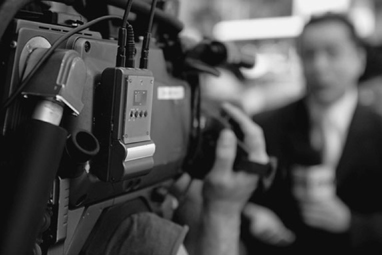
FIGURE 12.2 Grafissimo/iStockphoto.com
AD-LIBBING
Certain methods can help reporters improve their ad-libbing ability, or speaking without a script. Word association is one common method used by reporters to make sure they do not run out of things to say during a live remote.
Many reporters write down a list of key words or phrases in the order in which they want to cover their material. When they exhaust all the information dealing with a key word, they move to the next one on the list until they have covered everything. Good ad-libbing reporters need only that one word or phrase to keep them going, which is important because reporters are often forced into remote situations that require a considerable amount of ad-libbing.
One easy trick to help build your confidence in ad-libbing is to practice by talking about simple topics. Take a look at the three following examples:
■ The weather today is unseasonably hot with a high of 90 degrees, but there is a 100% chance of severe thunderstorms in the late afternoon. Those storms are forecast to bring two to three inches of rain, damaging hail and strong winds near 40 miles per hour.
■ A local concert venue is hosting a popular singer this evening (pick your favorite) who will play her biggest hits in a farewell concert. Tickets are being scalped for double their face value, so some now cost $2,000 each. The concert will start at 9pm and end at midnight.
■ The sophomore quarterback of your university’s football team has just signed a five-million dollar contract with the Kansas City Chiefs.
FAST FACT: Ad-lib is an abbreviation of ad libitum, which is Latin for “at one’s pleasure.”
He will skip his last two years of college to play in the National Football League. The Chicago Bears and Philadelphia Eagles were also interested in recruiting him.
Could you ad-lib about each of these for 10 to 15 seconds? Just remember the main facts of the story and then phrase it out loud; that’s really all there is to ad-libbing. Once you have mastered basic stories like the examples above, you can move to harder topics like corporate negotiations or land annexations. The trick is to concentrate on the main points, then sum it up for the viewer back home.
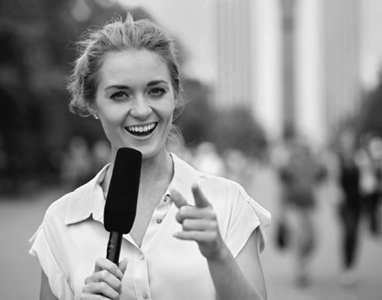
FIGURE 12.3 Pavel L Photo and Video/Shutterstock.com
MEMORIZING AND DELIVERING LIVE REPORTS
Some reporters have an amazing ability to memorize scripts. Others cannot memorize more than a few lines of copy at a time. Overall, it’s unfair to ask reporters to try to recall more than 20 seconds of a script. Because all TV reporters are eventually asked to do live reports, they must either develop the ability to memorize their material or use some tricks to help them. Most stations and networks have no problem with reporters glancing down at their notes during live reports, particularly during a breaking story. It’s less acceptable, especially in a routine live report outside a city-council meeting or the mayor’s office, to see a reporter’s head bobbing up and down every few seconds to read notes.
ABC 27 Tallahassee reporter Jade Bulecza advises that:
[T]he best live report is an interactive one. You should show something and not just stand there. For live shots in the field I’ll make bullet points or won’t use notes at all. We use teleprompters when giving live reports in the studio or newsroom but you can’t always count on them. Sometimes, equipment fails! You should have your notes in hand . . . just in case the prompter crashes!
DEFINING TERM: Dining table solution—telling the story in conversational sense as if you were speaking to your family around the dining table.
KYTV’s Ethan Forthetz agrees, saying:
The best live report is one that is active for a reason. Consultants talk about the need for “active” standups and live shots but just taking three steps forward, or simply holding up a stack of papers is not being “active.” Being truly active is showing the viewer something, adding some perspective that he wouldn’t get otherwise. For example, in a live shot for a fatal crash, have the photog zoom out so you can point to which direction each car was driving and where they collided. That is perspective the viewer may not get just from seeing b-roll of emergency vehicles and smashed up cars.
I do not memorize lines before a live shot. I think that’s asking for trouble because if you memorize lines, then flub up a word or two, it can cause a nasty snowball effect that can quickly wreck a live shot. It can also look and feel like you’re going through the motions, just reciting lines you memorized. I find it more conversational and comfortable to (1) know my topic well enough to be able to talk about it and (2) have some bullet points jotted down on paper to move me from one point to another should I need a quick reminder.
This thinking mirrors the dining table solution, which relies more on conveying the main points instead of memorizing a script. As the live shot is being set up, the reporter reviews the notes, highlighting the important points of the story. Just before the live shot begins, the reporter then simply pretends he’s telling his family the story around the dining table. The advantage is that the report will usually hit the salient facts and ignore the minutiae that are merely cluttering up the story.
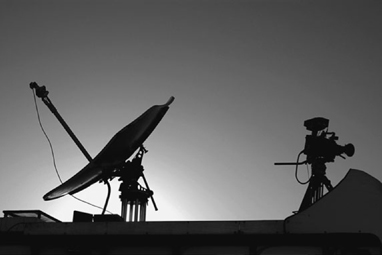
FIGURE 12.4 kwanisik/iStockphoto.com
LIVE SHOTS AND STREAMING
History has demonstrated the evolution of journalism’s live shots as the technology has changed. The earliest broadcast news reports that were transmitted live were done on the radio. These were a simple task for a reporter, who merely needed to speak into a phone line while reading his notes from a sheet of paper.

Name—Lucas Parrish Johnson
Job Title—Director/Assistant Director/Ignite Operator
Employer and Website—WSB–TV Channel 2, Cox Media Group, Atlanta, GA; wsbtv.com
Social Media Outlets I Use—Facebook
Typical Daily Duties—I come in at 2:45pm. Typically I walk right into a promo session, where we record promos for air promoting the 4pm show. We also record weather forecasts with the meteorologists for our website and all social media platforms. We use robotic cameras, so we will check/resave all of our camera shots so that they will be ready for the evening shows. The anchors will also track any teases or PKGs for the 4pm show from the set, and I will record them.
Sometimes, I will be the assistant director (AD) for the 4pm news. We use the Grass Valley Ignite control room automation system, so ADing consists of changing any codes necessary based on floats/kills/adds the producer may need to make. I also will check all codes in the rundown, looking for conflicts/mistakes. I also check all the scripts to make sure cues/graphics are where they need to be. After the 4pm show, I will get ready to direct the 6pm show.
My first step is to code the rundown based on what the producer wants. A single code determines what camera and saved camera shot we will use; it also will call up any graphics that we need, and bring up the audio source to its correct level.
Other codes can also cue and play video, put a remote live shot on the air, etc. We have a library of 10,533 codes we have built over time, so that we can accomplish anything a producer may want to put to air. The next step in getting ready for the 6 is going through all the scripts and putting anchor names, name supers, and camera cues for the anchors. Around 5:30pm, I go into our spare control room to run through my show, checking for mistakes/conflicts. During the 6pm show, my AD is responsible for making any changes the producer needs. But the way Ignite works, he/she can make any changes they want, but they won’t happen until I import them into my Ignite timeline. Imports can take anywhere from three to seven seconds to complete, and while you are importing, you can’t do anything else. So changes must be made in a timely fashion so that the director has time to import them. After the 6pm show, we have a lottery drawing, and record a few promos with the anchors/lottery talent.
I typically have my dinner break from 7:30pm to 8:30pm.
We record several local programming shows that air during the week. For instance, for 35 years we have been producing a high school quiz show, called “High Q.” Teams from all over the metro Atlanta area come to compete against each other, with the goal of winning scholarship money at the end of the season. I direct that show one or two times a week during the school year. We also produce a show called “Hot Topics,” which is syndicated across several markets. We tape “Hot Topics” Thursdays at 8:15pm to air on Saturday night at 11:35pm.
Then we have another promotion session for the 11 o’clock show at 9:15pm where we record one promo that airs around 9:45pm. Our station produces and airs all of the lottery drawings for the state of Georgia, as well as “Mega Millions,” which airs nationwide. At 9:45pm we rehearse the drawings that we will air before and after the 11pm show. We do this to make sure the machines work properly and so that the talent can read through the script a couple of times.
The anchors come back to the set at 10:00pm to record more promos for the 11 o’clock show. We also have them track a couple of in–show teases and set all robotic camera shots again. Then from 10:30pm–11:00pm, I look through every line in the rundown to check for and fix any errors. During the 11 o’clock show, I am the AD responsible for similar duties as when I served as AD for the 4pm show. After the 11pm show, we record a lottery promo that will air overnight and through the next day.
At 11:45pm, I leave for home!
The introduction of the visual image made this more challenging for field reporters. During the transition from film to videotape and microwave in the mid-1970s, many TV reporters found it difficult to make the adjustment. They were accustomed to having 45 minutes or more to write their scripts while the film was being developed. The only time TV reporters went live was when the station or network bought a telephone line, and that was reserved for important occasions. Many TV reporters were unable to handle the pressures of going live and thus changed jobs.
A similar sea change is occurring now. Reporters are now expected to not only produce live shots from the field, but also to stream that report online. If the entire live shot is not uploaded to the Internet, at least a brief teaser is expected on Twitter to entice the audience to follow the story either on the air or on the station’s website.
New streaming technology and protocols are being invented at a rapid pace. However, there are some well-known delivery systems that are frequently used to get the story onto the Internet. Let’s review the five standard online programs that are used on social media to put information in front of your audience.
■ Best Use: Short, informative, or fun videos that work without sound.
■ Video Length Limit: None.
■ Tips:
■ Facebook clearly gives algorithmic priority to video content, and even more so to natively uploaded videos. For best reach, don’t link to a YouTube channel.
■ Since Facebook videos autoplay without sound, it’s essential yourvideos are super appealing visually and make sense without the audio on.
■ Shorter is also better. From a psychological perspective, Facebook users flicking through their feed often seem to be on the hunt for quick, digestible “fun” content rather than longer, in-depth content more appropriate to other channels. Anything more than two minutes probably won’t be watched all the way through.
■ Broadcast live on Facebook is great for covering any lectures, events, or behind the scenes moments in a raw, authentic way without the need for professional video production.
■ Best Use: Visually stunning micro videos, teasers, behind-the-scenes, looping videos.
■ Video Length Limit: 15 seconds.
■ Tips:
■ Hashtags in Instagram are vital to maximize exposure to your videos.
■ Instagram is visual by its very nature. As on Facebook, all videos autoplay on silent.
■ It’s best to use Instagram for more broad brand building content like behind the scenes videos and simple typographic videos.
■ Instagram is also great for taking your longer video content and breaking it down into 15-second teasers that will entice users to go watch the full versions.
Snapchat
■ Best Use: Fun, outrageous, timely vertical content, such as behind the scenes, unique events, or day in the life snippets.
■ Video Length Limit: Ten seconds (Stories are ten-second videos strung together which disappear after 24 hours).
■ Tips:
■ Heavily market your username on other social media channels so people can find you.
■ With over 100 million active users per month, Snapchat is a growing platform.
■ Best Use: Teasers that promote full length content or to your website.
■ Video Length Limit: 30 seconds.
■ Tips: The fact that the link can be right next to the video means it’s easier than on Instagram to convert Twitter users to your website.
YouTube
■ Best for: Longer, educational content, product demos, weekly series.
■ Video Length Limit: None.
■ Tips:
■ In general, people are coming to YouTube specifically to watch a video, whereas on Facebook or Instagram it’s more incidental, since those platforms are filled with text and images as well. As such, the viewer’s attention span is probably a bit higher on YouTube and you can and should post longer content there.
■ You should approach YouTube as a slow and steady accumulation of video assets that are helpful to your target audience.
Regardless of the delivery format, instant news delivery increases the risk of getting the facts incorrect. As stressed in earlier chapters, nothing is more important for journalists than accuracy. Reporting live to a community, to the nation, and often to the world carries with it a tremendous responsibility. As with any story, but particularly when covering a story live, reporters must check and double-check their information and must rely heavily on attribution when the slightest possibility exists that the information may not be accurate.
KEEPING COOL
All of us have seen a TV reporter in trouble during a live remote. The scene usually goes something like this: The reporter is standing in front of a camera getting ready to report live and something goes wrong with the earpiece system that allows the producer or cameraperson to speak with the reporter. The reporter ends up looking mystified because she does not know whether she is on the air. A cameraperson may be trying to signal what’s going on, but some times this person is also in the dark. A worst-case scenario is when the reporter actually says “Are we on?” when in fact she is.
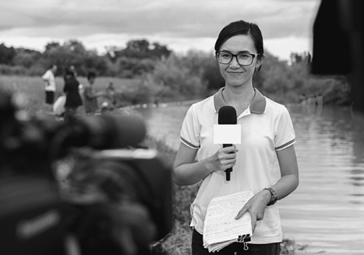
FIGURE 12.5 2p2play/Shutterstock.com
Sometimes these mishaps can be avoided if a TV monitor is available for the reporter. That way, the reporter would know if she is on the air with out having to wait for verbal instruc tions. These situa tions are trying for reporters, who under standably do not like to appear foolish in the eyes of the audience, but the TV audience has become so sophisticated that it tends to ignore such mishaps or, at worst, to chuckle a little over the breakdown in communications. It’s best for reporters to accept the fact that mistakes are going to happen and equipment is going to malfunction.
The most common reason why a reporter might lose composure on camera is when a technical problem might prevent the reporter from being seen or heard. Technical problems are often the cause of reporters losing their cool during less dramatic live reports.
VOICEOVERS FROM THE FIELD
A voiceover, which is described in much greater detail in the following chapter, is a story in which you hear the anchor talking while video footage is aired; the voice is aired over the visual images, thus the term voiceover.
A growing trend when crafting live reports is for video to be rolled in while the reporter is narrating. To accomplish this, the field videographer will beam footage to the newsroom prior to the live shot. This footage may either be raw, which is unedited field footage, or be cut into a voiceover. When the live shot is then under way, the newsroom will roll the footage over the reporter’s narration. While this is a bit trickier than a standard live shot, it gives the viewing audience more to look at than the reporter merely presenting from the field.
Adding a layer of video requires more preproduction than a regular live shot, plus there must be precise communication between the field and the newsroom during the actual report so the video rolls at the right time. These technical considerations can be managed with a clear communication chain, which is addressed in the next section.
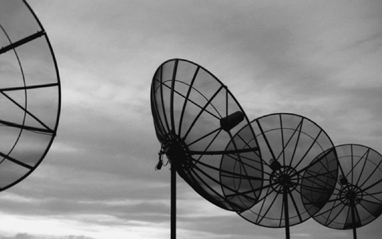
FIGURE 12.6 donald_gruener/iStockphoto.com
TECHNICAL CHALLENGES
In no other aspect of broadcast journalism is the reporter more at the mercy of technical difficulties than during a live field report. There is a communication chain that must be followed during the report. This chain ensures several elements will flow in both direc tions between the newsroom and the field reporter.
The most obvious elements are the video and audio that emanate from the field report. The video is the simplest to define; it’s a clear visual image from the remote location that’s beamed back to the studio’s engineering center. The on-air audio is usually limited to one handheld microphone that is handled by the reporter, although there may be a second microphone for either ambient audio (such as at a political rally) or an interviewee who has a dedicated lavaliere microphone.
But these are only two of the four parts of the communications chain. The third element is an open phone line, usually between the field videographer’s cell phone and a studio engineer, who coordinates the technical aspects of the feed. Because getting a clear signal can require the re-aiming of portable antennae, calibrating the audio and video feeds, and general tweaking to eliminate noise and enhance the image, a phone line must be reserved for he engineer to send commands to the field.
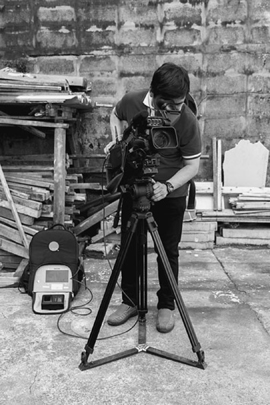
FIGURE 12.7 2p2play/Shutterstock.com
The final element is the interrupted feedback (IFB) line. An IFB is the return audio from the studio that allows the reporter to hear the anchor’s questions from the set. This is accomplished through a simple audio line, although it feeds audio backward—from the news room and back to the field. Of course, it must reach the field reporter through an earpiece and not a field speaker; if the anchor’s question was transmitted to the field by a speaker, it would loop back into the reporter’s field microphone, causing feedback.
Each of the four lines in a communication chain (field audio, field video, engineering phone line, and reporter IFB) must be operational well before the reporter appears on the newscast. Reporting live entails a great deal of coordination with ample advance time for setting up. Additionally, the field crew must make sure that the reporter can deliver the news without any background distractions. Far too many field reports have been ruined by uncooperative people in the background mugging for the camera or making fun of the reporter.
SUMMARY
The biggest challenge that most broadcast reporters face is reporting live. Radio reporters have always faced that challenge because they could report from the scene of a breaking story in minutes with the use of a two-way radio. TV reporters relied on film for their coverage until the 1970s, when two technologies were developed: Small, portable videotape cameras (minicams) and microwave. Reporters suddenly lost the luxury of preparing their reports while they were traveling back from the scene of a story and while the film was being developed. Suddenly, reporters found that with microwave technology, they were often asked to go on the air immediately, while their videotape was being edited or cued up within minutes of being shot. They discovered that most of their thinking time had disappeared.
These developments brought about not only new challenges but also new risks. When thinking time is reduced, the chance of inaccuracy is increased. As a result, TV reporters have two concerns: (1) To collect information and sort it out quickly and (2) to ensure that it is accurate. The immediacy of the new technology also requires that reporters learn to ad-lib, making their improvised speech look easy and comfortable.
Test Your Knowledge
1. New technology permits broadcast news reporters to go live from almost any part of the globe with short notice. But these technological advances also place new burdens and responsibilities on journalists. Explain.
2. Good organization and note taking are important when a reporter covers a story live. How can these skills be developed?
3. What is ad-libbing and why is it essential that field reporters master it?
4. What is the dining table solution?
5. What are the four elements of the communications chain? Why is each needed for a successful live shot?
EXERCISES
1. Cover some event in the community and then arrange for another student in the school’s broadcast lab to videotape your stand-up report. After you have given your report, have the other student question you on tape. Return to the lab and watch the tape.
2. Cover a news conference with either an audiocassette player or video equipment. If you are using an audiocassette player, pick a sound bite and cue it up so that you can play it over the phone in the middle of a wraparound. If you are using a video camera, do an open and close at the scene without preparing a script. Return to the lab and insert a sound bite between the open and the close that you recorded at the scene.
3. Have another student read a lengthy story to you from a newspaper. Make notes as he or she reads the story. Study your notes for two minutes and then record a report either on audiotape or on video. Play it back for other students and your professor, and ask for an evaluation.
4. Watch several local newscasts until you see two or three live shots. Discuss if these live shots are justified by whether the stories are “current” or if the live shots are being done in front of a “closed” location.
